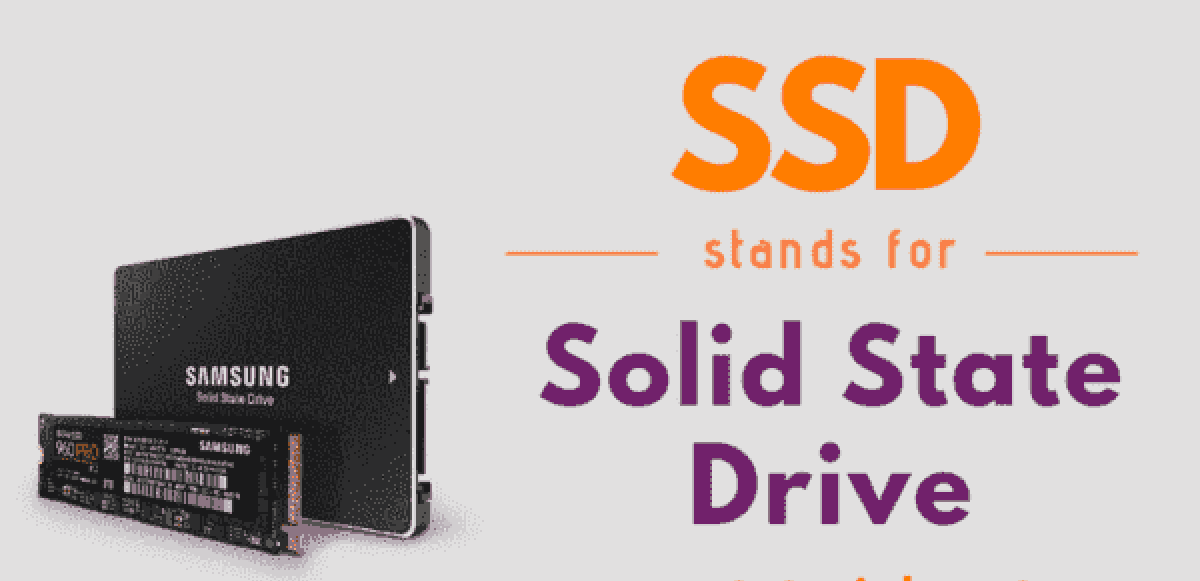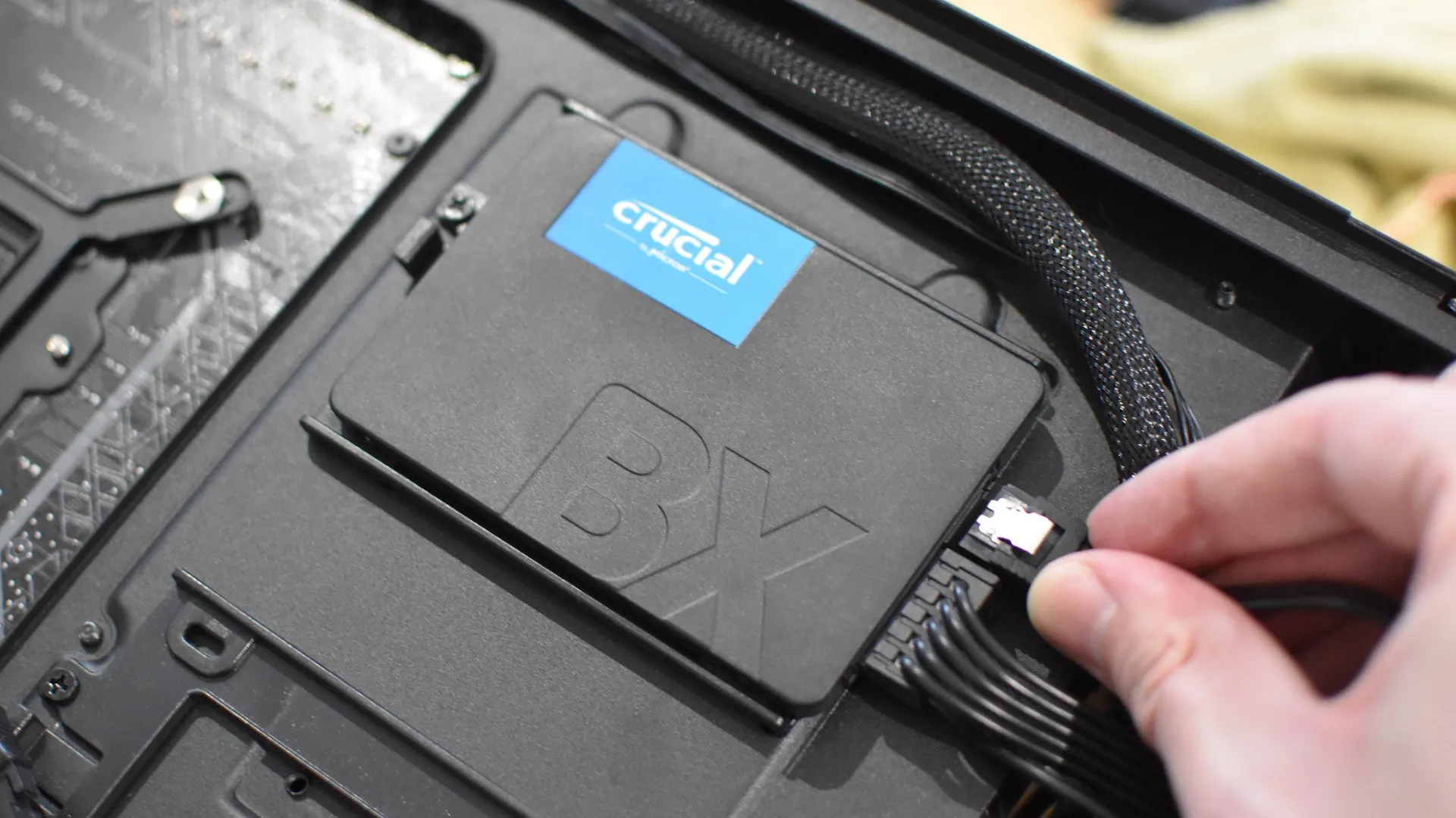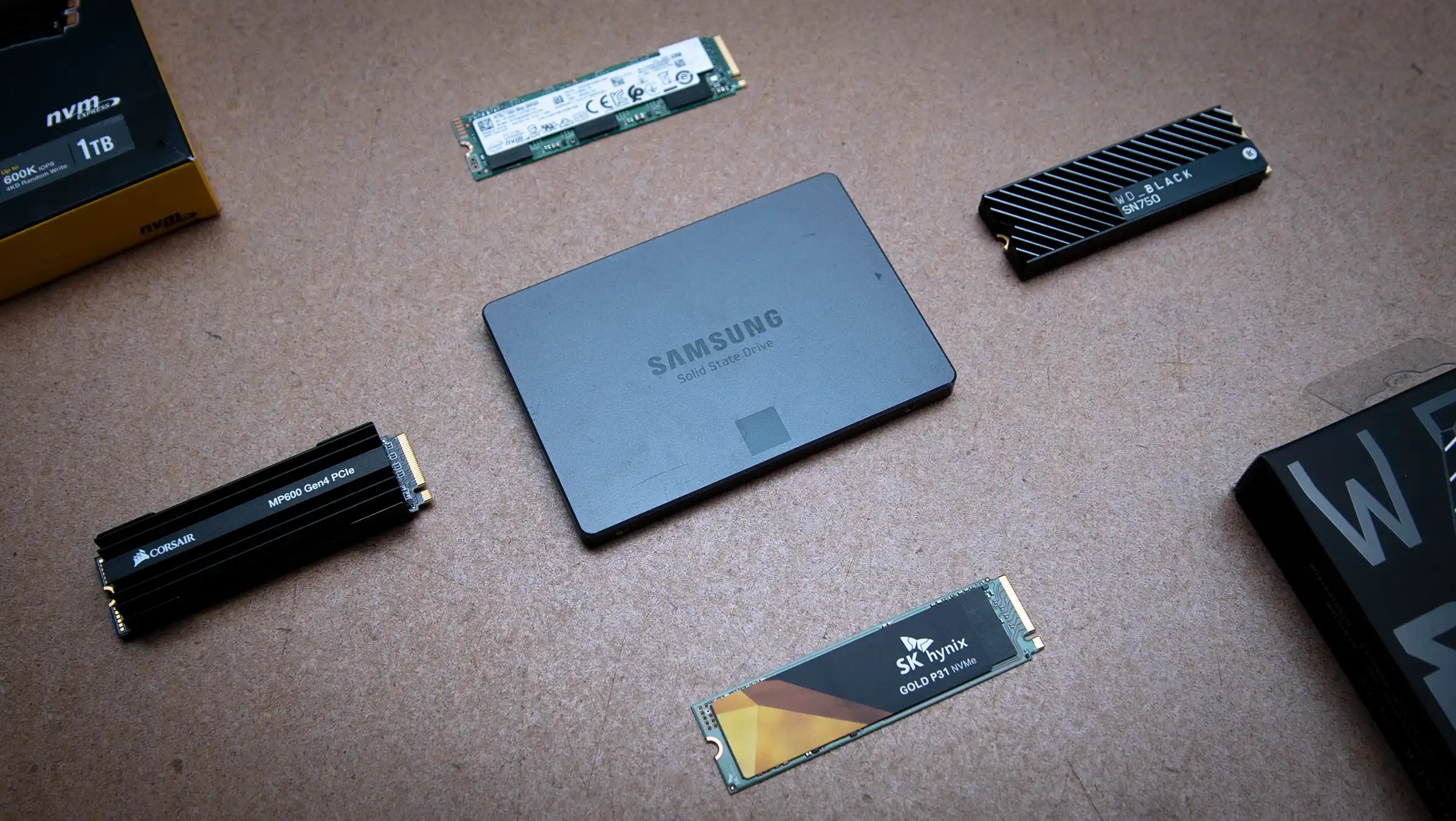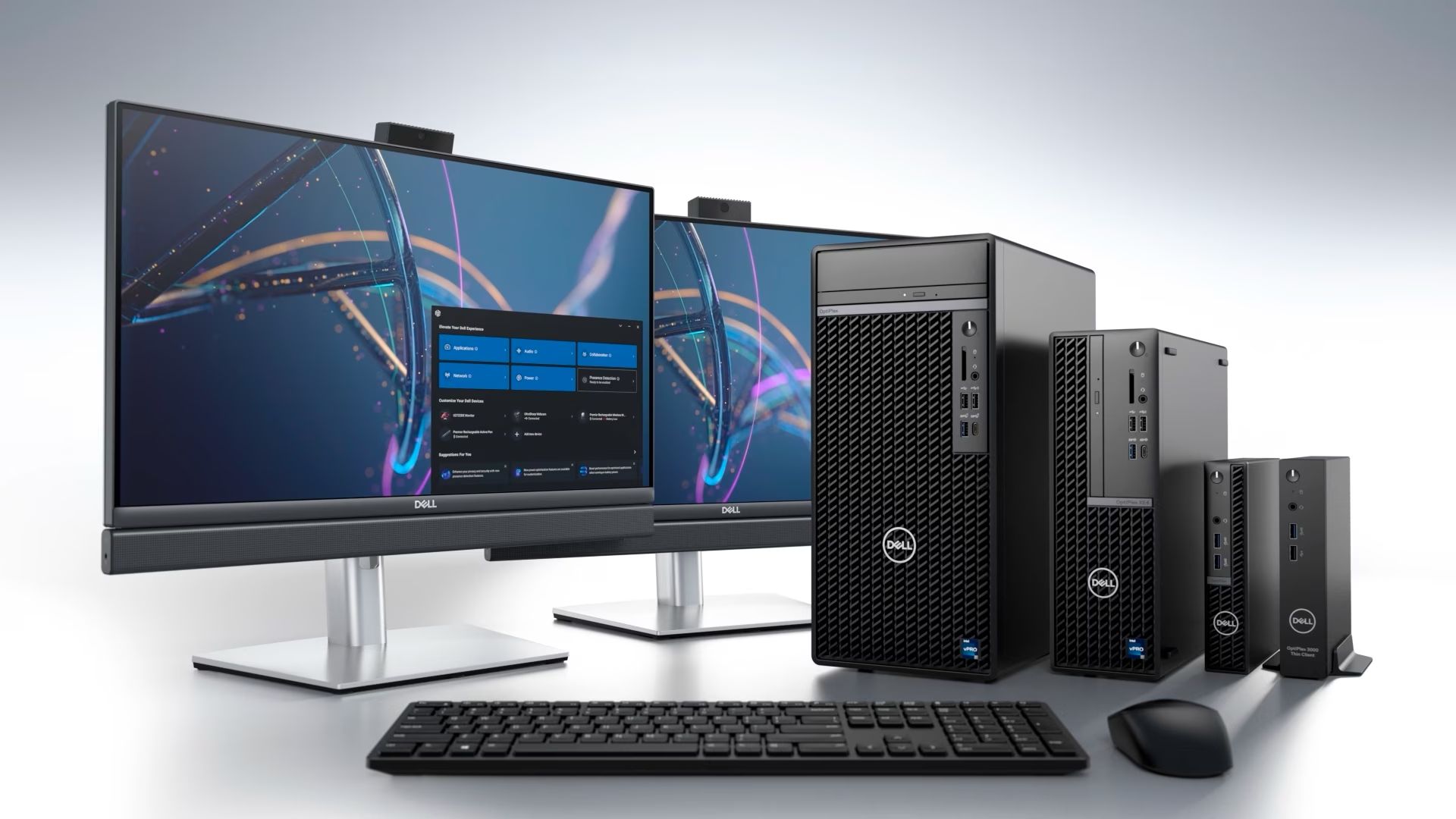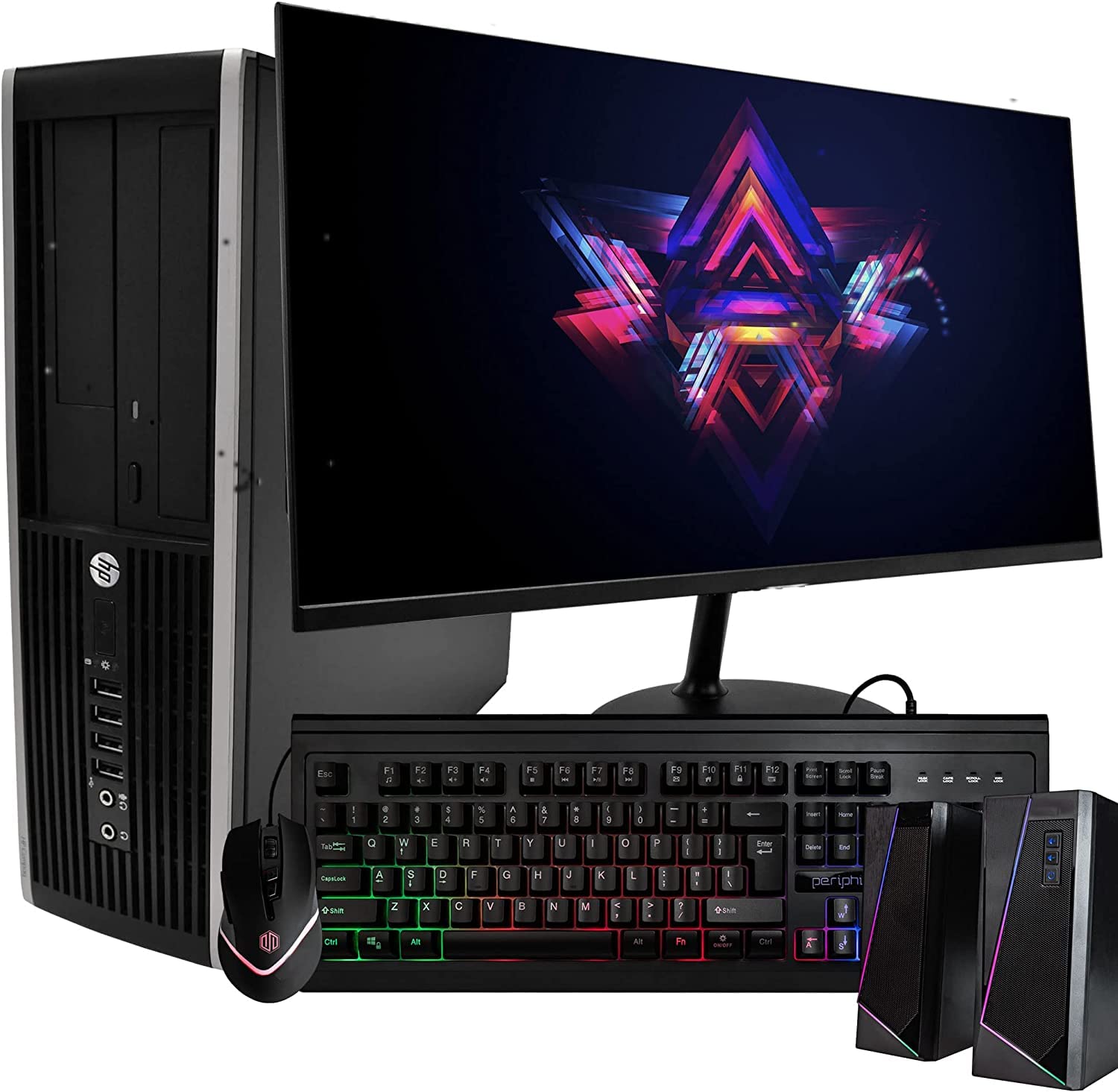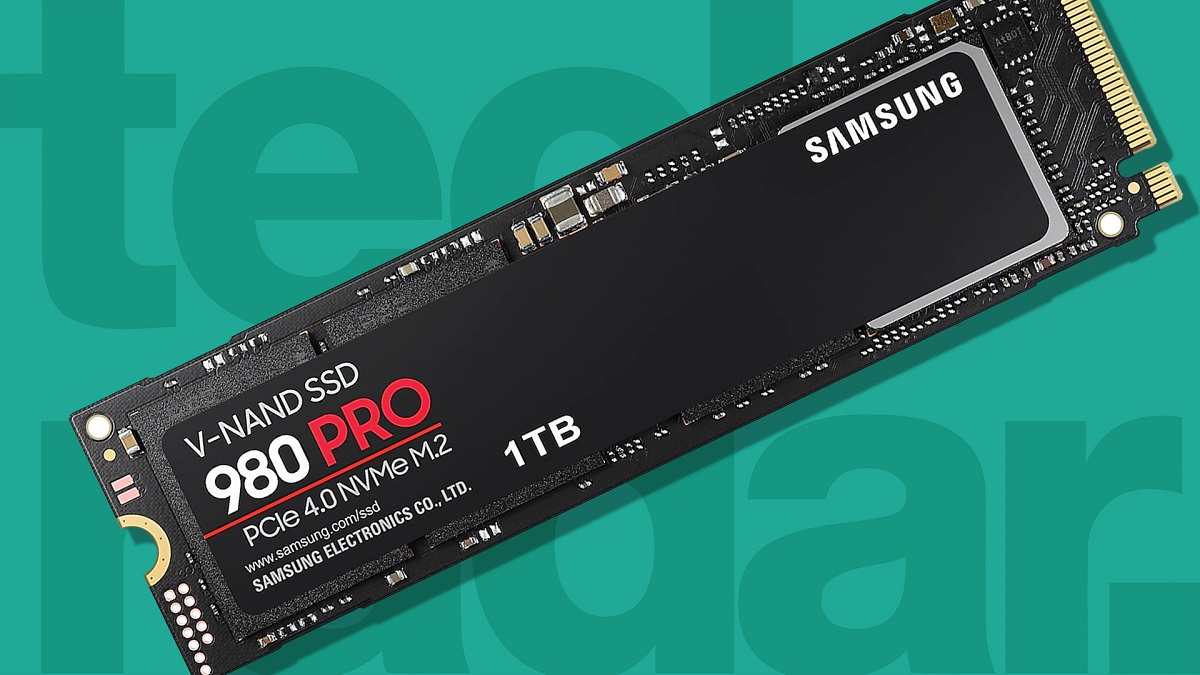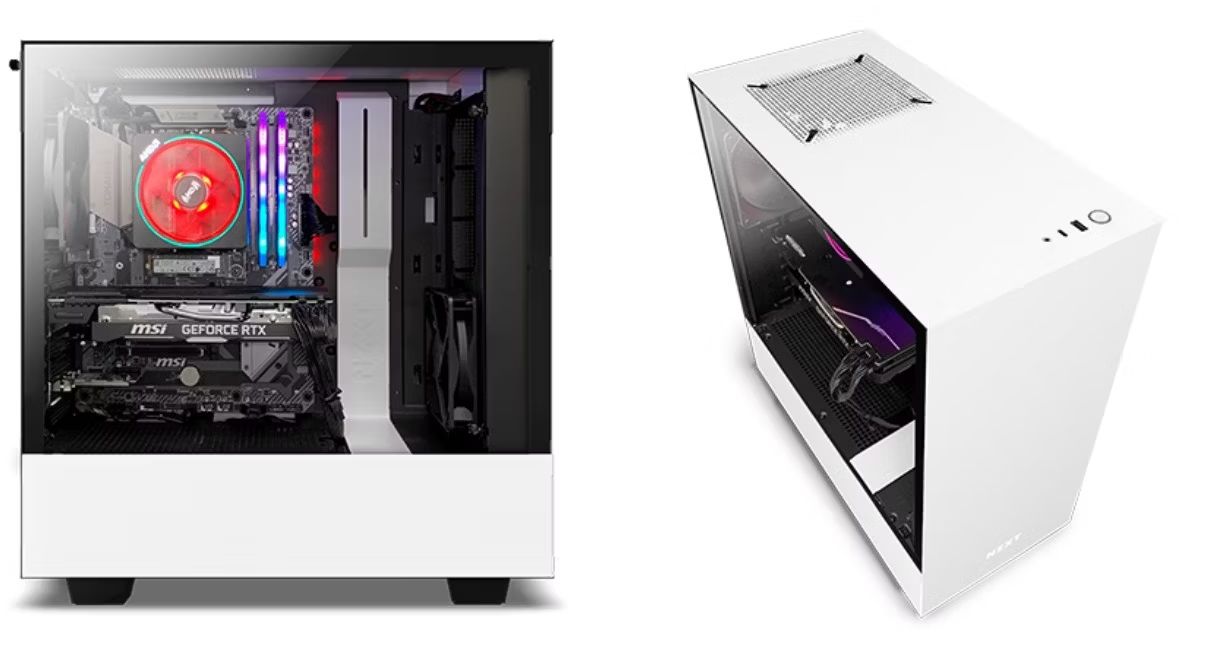Introduction
Technology has revolutionized the way we use computers, making them faster, more efficient, and capable of handling complex tasks. One key component that plays a crucial role in this transformation is the solid-state drive (SSD). If you’ve ever wondered “What does SSD stand for in computer terms?” or simply want to understand more about this advancement, you’ve come to the right place.
An SSD, short for solid-state drive, is a storage device that is used in computers to store and retrieve digital information. Unlike traditional hard disk drives (HDDs) which use spinning disks and mechanical components to read and write data, SSDs rely on flash memory to store data electronically. This substantial shift in technology brings a plethora of advantages that have made SSDs the preferred choice for many computer users.
The advantages of SSDs are numerous. First and foremost, SSDs offer significantly faster data transfer speeds and quicker access times compared to HDDs. This means that applications and files stored on an SSD are launched and loaded much quicker, resulting in improved overall system performance. Additionally, SSDs are more durable and less prone to physical damage, as they lack moving parts. This makes them highly reliable for storing valuable data without the risk of mechanical failures often associated with HDDs.
Moreover, SSDs are typically smaller and lighter in physical size compared to HDDs. This makes them an ideal choice for laptops and other portable devices where compactness and weight are important factors. The decreased power consumption of SSDs also contributes to better battery life, allowing users to work or play on their devices for extended periods without having to constantly search for a power source.
In this article, we will delve deeper into what SSDs are and how they work. We will explore the different types of SSDs available and highlight their uses in computers. Furthermore, we will provide tips on choosing the right SSD for your computer and offer insights on how to maintain and optimize its performance. By the end of this article, you will have a comprehensive understanding of SSDs and their role in enhancing computer performance.
What is an SSD?
An SSD, which stands for solid-state drive, is a type of storage device that is used in computers and other electronic devices. It is a non-volatile storage medium, meaning that it retains the stored data even when the power is turned off. Unlike traditional hard disk drives (HDDs) that use spinning disks and mechanical heads to read and write data, SSDs use a different technology based on flash memory.
Flash memory is a type of non-volatile memory that can be electrically erased and reprogrammed. SSDs use this flash memory technology to store data, using a series of interconnected memory cells to store and retrieve information. These memory cells are made of either floating gate transistors or charge trap flash, which allow the SSD to store data in a digital format.
What sets SSDs apart from HDDs is their speed and performance. SSDs offer much faster data transfer speeds, resulting in quicker loading times for applications and files. This is because there are no moving parts in an SSD, allowing for near-instantaneous data access. In contrast, HDDs rely on spinning disks and mechanical heads, which introduce latency and slower read/write speeds.
Another significant advantage of SSDs is their durability and reliability. Because SSDs do not have any moving parts, they are less prone to mechanical failures that commonly affect HDDs. This means that SSDs can withstand physical shocks, vibrations, and extreme temperature variations better than HDDs, making them a more reliable choice for storing precious data.
Furthermore, SSDs consume less power compared to HDDs. Since there are no spinning disks or mechanical components that require energy, SSDs are more energy-efficient. This not only contributes to better battery life for devices like laptops and smartphones but also reduces the overall power consumption of the computer system.
Overall, SSDs offer a significant boost in performance, reliability, and energy efficiency compared to traditional HDDs. Their use in computers has become increasingly popular, leading to faster and more responsive systems. In the next section, we will explore the advantages of SSDs in more detail and compare their performance to that of HDDs.
Advantages of SSDs
Solid-state drives (SSDs) have gained immense popularity in the world of computer storage due to the numerous advantages they offer over traditional hard disk drives (HDDs). Let’s take a closer look at the key advantages of SSDs:
- Faster Performance: One of the most significant advantages of SSDs is their lightning-fast performance. Unlike HDDs, which rely on mechanical parts to read and write data, SSDs use flash memory technology. This allows them to access and retrieve data at speeds that are exponentially faster, resulting in quicker boot times, faster application launches, and overall improved system responsiveness.
- Improved Durability: SSDs are highly durable due to their design, which lacks any moving parts. HDDs, on the other hand, are susceptible to failures caused by mechanical wear and tear. The absence of moving components in SSDs makes them more resistant to physical shocks and vibrations, making them a reliable choice for portable devices that are constantly on the move.
- Better Energy Efficiency: SSDs consume less power compared to HDDs. Since HDDs require motor-driven platters to spin, they consume more energy. On the contrary, SSDs use electronic chips for data storage, resulting in lower power consumption. This not only leads to improved battery life in laptops and other portable devices but also reduces the overall energy consumption of the system.
- Reduced Noise and Heat: Without any mechanical parts, SSDs generate significantly less noise and heat compared to HDDs. The absence of spinning disks and moving heads eliminates the sound of the motor, resulting in a quieter computing experience. Additionally, the reduced heat production improves the overall system temperature, leading to better stability and longevity of other components.
- Compact and Lightweight: SSDs are much smaller and lighter compared to HDDs. This makes them an ideal choice for devices where space is a constraint, such as thin laptops, ultrabooks, and mini PCs. The compact size and lightweight nature of SSDs allow manufacturers to create slimmer and more portable devices without compromising on storage capacity.
These advantages have made SSDs a top choice for users who prioritize speed, reliability, and efficiency in their computing experience. In the next section, we will compare the performance of SSDs and HDDs to further understand the impact of SSDs on overall system performance.
Performance Comparison Between SSDs and HDDs
When it comes to performance, solid-state drives (SSDs) have a significant edge over traditional hard disk drives (HDDs). Let’s take a closer look at the key performance differences between these two types of storage devices:
- Data Transfer Speeds: SSDs boast incredibly fast data transfer speeds compared to HDDs. The absence of moving parts allows SSDs to read and write data at lightning-fast speeds, enabling quicker file transfers, faster application launches, and rapid system boot times. HDDs, on the other hand, are limited by the mechanical rotation of their disks, resulting in slower transfer rates.
- Access Time: SSDs offer incredibly low access times, which refers to the time taken to locate and retrieve data. This quick access allows for near-instantaneous loading of applications and files. HDDs, on the other hand, have higher access times due to the physical movement of the mechanical parts involved, resulting in slower performance.
- Random I/O Performance: SSDs excel in random I/O (input/output) performance, which is crucial for tasks such as opening multiple applications simultaneously or handling large amounts of small files. The random access speed of SSDs is significantly faster than that of HDDs, due to their ability to read or write data from multiple locations simultaneously. HDDs, on the other hand, have limitations in random I/O performance due to the mechanical constraints of their rotating disks.
- Sequential I/O Performance: In terms of sequential I/O performance, which refers to tasks that involve transferring large files or streaming media, SSDs also outperform HDDs. The faster data transfer rates of SSDs allow for quicker file transfers and smoother multimedia playback. HDDs, although capable of handling sequential tasks, usually have lower transfer speeds compared to SSDs.
- Overall System Performance: Due to their superior performance in data transfer speeds and access times, SSDs offer a tangible improvement in overall system performance. Applications load faster, files open quickly, and the system feels more responsive compared to using an HDD. This enhanced performance is particularly noticeable during intensive tasks such as video editing, gaming, and running resource-heavy software.
It is important to note that while SSDs offer remarkable performance advantages, HDDs still have their place in certain applications. HDDs tend to have larger storage capacities for a lower cost per gigabyte, making them suitable for storing large media libraries or archival data where speed is not the primary concern.
Overall, SSDs deliver a significant boost in performance, enabling faster data transfers, quicker access times, and overall improved system responsiveness. In the next section, we will explore how SSDs work and the technology behind their impressive performance.
How do SSDs work?
Solid-state drives (SSDs) operate on a different technology than traditional hard disk drives (HDDs), utilizing flash memory to store and retrieve data. Understanding how SSDs work can shed light on their impressive performance and unique features.
The key component in an SSD is the NAND flash memory. This type of non-volatile memory is made up of cells that store data in the form of electrical charges. Within each cell, there are tiny transistors, also known as floating gate transistors or charge trap flash, which can hold a certain amount of electrical charge to indicate the binary states of 0 or 1.
When data needs to be stored on or retrieved from the SSD, the controller, which is the brains of the SSD, sends signals to the NAND flash memory. The controller manages the reading and writing operations, as well as various other functions like error correction and wear leveling.
When writing data to an SSD, the controller sends the binary information to the NAND flash memory. The flash memory then uses electrical voltage to apply the appropriate charge to the transistors within the cells, storing the data as 0s and 1s. This process is known as programming or writing.
When reading data from an SSD, the controller sends signals to the NAND flash memory to retrieve the stored data. By measuring the difference in electrical charges within the cells, the controller can interpret the binary states and retrieve the correct data. This process is known as reading.
One crucial aspect of SSDs is wear leveling. Flash memory cells have a limited number of times they can be written to before they start to degrade. Wear leveling is a technique used by the SSD controller to distribute the write operations evenly across the cells, preventing certain cells from wearing out faster than others. This improves the overall lifespan and performance of the SSD.
Another feature of SSDs is TRIM. TRIM is a command that enables the operating system to inform the SSD which blocks of data are no longer in use. This allows the SSD to erase and release these blocks, making them available for quicker write operations in the future. TRIM helps maintain the performance and efficiency of the SSD over time.
In summary, SSDs employ NAND flash memory and a controller to store and retrieve data. The controller manages the reading and writing operations, as well as other important functions like error correction and wear leveling. This combination of technology allows SSDs to deliver exceptional performance, durability, and reliability.
Different Types of SSDs
As the demand for solid-state drives (SSDs) continues to grow, manufacturers have developed different types of SSDs to cater to various needs and requirements. Let’s explore the different types of SSDs available in the market:
1. SATA SSDs: SATA (Serial ATA) SSDs are the most common type of SSDs available. They connect to the computer’s motherboard using the SATA interface, the same interface used by traditional hard disk drives (HDDs). SATA SSDs offer significant performance improvements over HDDs, but they can be limited by the SATA interface’s maximum transfer speed.
2. NVMe SSDs: NVMe (Non-Volatile Memory Express) SSDs are designed specifically for high-performance computing. They use the PCIe (Peripheral Component Interconnect Express) interface instead of SATA, allowing for much faster data transfer speeds. NVMe SSDs offer exceptional performance and are ideal for tasks that require quick data access, such as gaming, video editing, and virtual reality applications.
3. M.2 SSDs: M.2 SSDs are a form factor of SSDs that can be used in laptops, desktops, and other devices that support the M.2 slot. They are small and compact, making them an excellent choice for ultrabooks and slim laptops. M.2 SSDs can utilize both SATA and NVMe interfaces, so it’s essential to check the specifications to ensure compatibility with the system’s M.2 slot.
4. PCIe SSDs: PCIe SSDs connect directly to the computer’s PCIe slot, bypassing the limitations of SATA or M.2 interfaces. This allows for even faster data transfer speeds and lower latency compared to SATA and M.2 SSDs. PCIe SSDs are commonly used in high-end workstations and servers where speed and performance are critical.
5. Enterprise SSDs: Enterprise SSDs are designed for data centers and enterprise-level applications. They offer enhanced durability and reliability to meet the demands of continuous read/write operations in high-traffic environments. Enterprise SSDs often come with advanced features like power loss protection and higher endurance ratings to ensure data integrity and longevity.
6. External SSDs: External SSDs are portable storage devices that connect to a computer or other devices via USB or Thunderbolt interfaces. They offer the convenience of extra storage space on the go and are perfect for transferring and backing up large files quickly. External SSDs come in various form factors and capacities to suit different user needs.
It’s important to note that the performance and capacity of SSDs can vary greatly within each type. Factors such as the type of flash memory used, the controller, and the overall build quality can significantly impact an SSD’s performance. When choosing an SSD, it’s important to consider your specific requirements, such as storage capacity, data transfer speed, and price, to determine the best fit for your needs.
Uses of SSDs in Computers
Solid-state drives (SSDs) have become an integral part of modern computing systems, offering numerous benefits over traditional hard disk drives (HDDs). Let’s explore the various uses of SSDs in computers:
1. Operating System Installation: Many computer users choose to install their operating system on an SSD. By doing so, the system boots up faster, and the overall responsiveness of the computer improves. The quick access times and fast data transfer rates of SSDs allow for a snappy and smooth user experience.
2. Application Loading: SSDs are particularly beneficial for loading applications quickly. Applications installed on an SSD launch within seconds, allowing users to work seamlessly without any waiting time. This is especially advantageous for resource-intensive software, such as video editing tools and graphic design applications.
3. Gaming: Gamers worldwide have embraced the use of SSDs due to their ability to significantly reduce loading times in games. With an SSD, game levels load almost instantly, minimizing any downtime and allowing gamers to immerse themselves in gameplay without interruption. Additionally, SSDs can offer faster texture and asset streaming, resulting in smoother gaming experiences.
4. Multimedia Editing: Multimedia professionals, including video editors, animators, and graphic designers, rely on SSDs to store and access large files quickly. The fast read and write speeds of SSDs ensure smooth playback of high-definition videos, while rapid file transfers contribute to increased efficiency and productivity.
5. Virtualization and Servers: In server environments and virtualization setups, where multiple virtual machines operate simultaneously, SSDs deliver remarkable performance advantages. SSDs can handle simultaneous read and write operations efficiently, enabling faster data access and minimizing latency, resulting in improved server responsiveness and overall system performance.
6. Data Storage and Backup: SSDs are an excellent choice for storing and backing up critical data due to their enhanced durability and reliability. With no moving parts, SSDs are more resistant to physical shocks, making them suitable for applications where data integrity and safety are paramount. Additionally, the fast data transfer speeds of SSDs streamline the process of data backup and recovery.
7. Portable Computing: Laptops and ultrabooks benefit greatly from SSDs in terms of portability, power efficiency, and performance. The lightweight and compact nature of SSDs make them an ideal choice for portable devices, reducing both weight and power consumption. SSDs offer faster boot times, efficient multitasking, and overall improved performance for users on the go.
These are just a few of the many uses of SSDs in computers. SSDs have transformed the way we store and access data, delivering faster and more reliable performance across a wide range of applications. As technology continues to evolve, we can expect SSDs to become even more prevalent in the computing world.
Choosing the Right SSD for Your Computer
When it comes to upgrading or replacing the storage device in your computer, choosing the right solid-state drive (SSD) is essential to ensure optimal performance and compatibility. Here are some factors to consider when selecting an SSD for your computer:
1. Capacity: Determine the amount of storage space you require based on your needs. SSDs are available in a variety of capacities, ranging from 128GB to several terabytes. Consider the type of files you will be storing (such as documents, media files, or games) to determine the appropriate capacity for your personal or professional use.
2. Interface: Check the compatibility of the SSD’s interface with your computer’s motherboard. The most common interfaces are SATA, M.2, and PCIe. Ensure that your motherboard has the corresponding connector and supports the specific interface you choose for smooth installation and optimal performance.
3. Performance: Consider the performance factors that matter most to you. If speed is your priority, opt for an SSD that uses the NVMe protocol and connects through PCIe for faster data transfers and lower latency. However, if you have budget constraints or do not require maximum speed, a SATA SSD can still offer a significant performance improvement over traditional HDDs.
4. Endurance and Reliability: SSDs have a limited number of program and erase cycles per memory cell. Higher-endurance SSDs are designed for heavy workloads and offer a longer lifespan. Consider the SSD’s endurance rating and reliability features, such as advanced error correction, power loss protection, and data integrity safeguards, based on your usage requirements.
5. Price: SSDs generally cost more than traditional HDDs. Set a budget for your SSD purchase and prioritize features and performance factors based on your needs and affordability. Compare prices from reputable manufacturers and consider the warranty and customer support offered to make an informed decision.
6. Brand and Reputation: Choose SSDs from established and reputable brands known for reliable performance and quality products. Research customer reviews and feedback to get an understanding of the brand’s reputation, customer support, and warranty service. Opt for a brand that inspires confidence in terms of reliability and after-sales support.
7. Compatibility and System Requirements: Ensure that the SSD you choose is compatible with your operating system and firmware. Check the system requirements and recommendations provided by the SSD manufacturer to avoid any compatibility issues or performance limitations with your computer’s hardware and software configurations.
By considering these factors, you can make an informed decision when choosing the right SSD for your computer. Remember, an SSD is a long-term investment that can significantly improve your system’s performance, so take the time to research and select the SSD that best meets your specific requirements and budget.
Tips for Maintaining SSDs
While solid-state drives (SSDs) offer many benefits over traditional hard disk drives, it’s important to implement proper maintenance practices to ensure their longevity and optimal performance. Here are some tips for maintaining your SSD:
1. Enable TRIM: TRIM is a feature that helps optimize the performance of SSDs by allowing the operating system to inform the SSD which blocks of data are no longer in use. Enabling TRIM ensures that the SSD can efficiently free up space and maintain its performance over time. Check your operating system settings to ensure that TRIM is enabled for your SSD.
2. Update Firmware: SSD manufacturers often release firmware updates to improve performance, stability, and compatibility. Regularly check for firmware updates specific to your SSD model and install them as recommended by the manufacturer. Firmware updates can address known issues and enhance overall SSD performance.
3. Avoid Overfilling: Overfilling an SSD can negatively affect its performance and lifespan. It’s recommended to leave some free space on the drive to allow for efficient garbage collection, wear leveling, and TRIM operations. Aim to keep at least 10-20% of the SSD’s total capacity free to ensure optimal performance and longevity.
4. Minimize Unnecessary Writes: SSDs have a limited number of write cycles. Minimize unnecessary writes by avoiding excessive file transfers, frequent large file downloads, and unnecessary software installations. Additionally, avoid running software that frequently writes logs or temporary files to the SSD, as this can contribute to unnecessary wear and tear.
5. Avoid Defragmentation: Unlike HDDs, SSDs do not benefit from regular defragmentation. In fact, defragmenting an SSD can cause unnecessary wear on the drive and decrease its lifespan. SSDs handle data differently, and the wear leveling algorithms within the controller manage data placement for optimal performance. Therefore, it’s best to avoid defragmenting SSDs.
6. Regularly Back Up Your Data: While SSDs are generally reliable, unexpected failures can still occur. It’s important to regularly back up your data to an external storage device or cloud service. By having a backup, you can mitigate any potential data loss in the event of an SSD failure or other unforeseen circumstances.
7. Keep Your SSD Cool: Excessive heat can have a negative impact on SSD performance and longevity. Ensure that your computer has adequate cooling measures in place to prevent overheating. Proper airflow and ventilation can help maintain a suitable operating temperature for your SSD, prolonging its lifespan and performance.
By following these tips, you can maintain the performance and longevity of your SSD. Regularly implementing these maintenance practices will ensure that your SSD continues to deliver the reliability and speed that it is designed for.
Conclusion
Solid-state drives (SSDs) have revolutionized the world of computer storage, offering faster speeds, increased durability, and improved efficiency compared to traditional hard disk drives (HDDs). By understanding what an SSD is and how it works, as well as considering the advantages, performance comparisons, different types, and various uses, you can make an informed decision when choosing and maintaining an SSD for your computer.
SSDs have proven to be an excellent investment for enhancing overall system performance. They offer faster data transfer speeds, quicker access times, and improved multitasking capabilities. Whether you’re using your computer for gaming, multimedia editing, or everyday tasks, an SSD can significantly improve your computing experience.
When choosing an SSD, consider factors such as capacity, interface, performance, endurance, price, and brand reputation to find the right fit for your needs and budget. Regular maintenance practices, such as enabling TRIM, updating firmware, avoiding overfilling, minimizing unnecessary writes, and keeping the SSD cool, ensure optimal performance and prolong the lifespan of your SSD.
In conclusion, SSDs have transformed the storage landscape, providing users with faster, more reliable, and efficient storage solutions. As technology continues to advance, SSDs are expected to become even more prevalent and offer higher capacities and faster speeds. Embracing the benefits of SSDs can greatly enhance your computer’s performance, allowing for smoother multitasking, quicker application launches, and faster data transfers. Upgrade to an SSD today and experience the remarkable benefits it brings to your computing experience.







